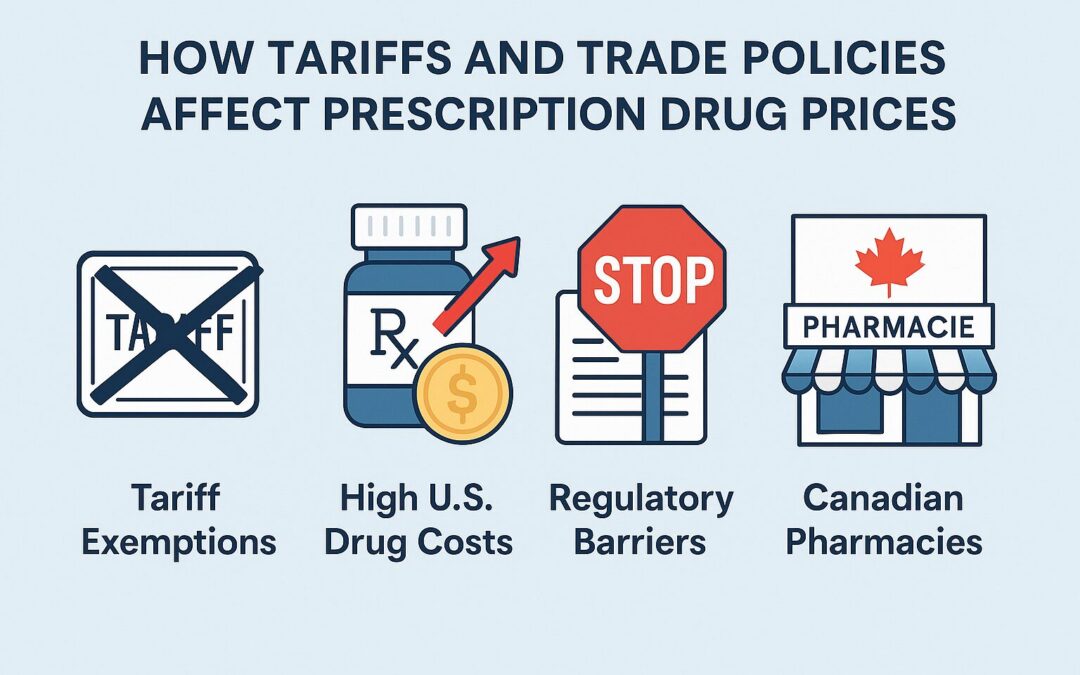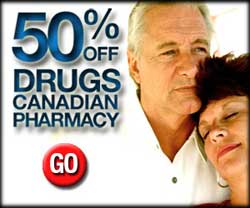How Tariffs and Trade Policies Affect Prescription Drug Prices: What You Need to Know
Prescription drug prices in the United States are among the highest in the world—and while much of this stems from domestic policy and pharmaceutical pricing practices, trade policies and tariffs can also play a role in the affordability and accessibility of medications. With increasing attention on cross-border healthcare solutions, particularly involving Canadian pharmacies, it’s important to understand how tariffs, trade agreements, and regulatory frameworks influence drug pricing.
1. Are There Tariffs on Prescription Drugs?
In general, prescription drugs are not subject to import tariffs under most modern trade agreements. Specifically, under the United States-Mexico-Canada Agreement (USMCA)—the trade pact that replaced NAFTA in 2020—prescription medications are among the goods exempt from tariffs to facilitate smooth cross-border access between Canada, the U.S., and Mexico.
This means that tariffs themselves are not the primary reason for high prescription drug prices in the United States. Instead, the pricing disparity stems from internal regulatory decisions, lack of negotiation power by federal healthcare agencies, and monopolistic pricing by pharmaceutical companies.
2. So Why Are Drug Prices Higher in the U.S.?
While no direct tariffs apply to medications, U.S. drug prices are driven by factors unrelated to international trade barriers, such as:
-
No federal regulation of drug pricing (unlike Canada’s Patented Medicine Prices Review Board).
-
Prohibitions on Medicare negotiating prices with drug manufacturers.
-
Patent protections and delayed introduction of generics and biosimilars.
-
Direct-to-consumer marketing, unique to the U.S., which inflates prices through advertising costs.
-
Middlemen (pharmacy benefit managers) adding complexity and markups to the drug supply chain.
3. Regulatory Barriers: The Real Trade Wall
Although there are no tariffs, regulatory restrictions act as non-tariff barriers to affordable international drug access:
-
FDA Restrictions: The U.S. Food and Drug Administration prohibits the large-scale importation of medications not approved for U.S. markets, even if they are chemically identical to those sold domestically.
-
Personal Import Limits: U.S. consumers are generally allowed to import only a 90-day personal supply of medications from abroad, typically from countries like Canada.
-
Canadian Export Concerns: Canada has implemented regulations to prevent domestic shortages, including restricting bulk drug exports to the U.S., particularly when importation schemes threaten Canadian supply chains.
4. Drug Importation and Tariff-Free Trade: A Legal Grey Area
Several U.S. states, including Florida, Colorado, and Vermont, have proposed or implemented drug importation programs to source cheaper medications from Canada. In 2024, Florida received federal approval to move forward with such a program, marking a shift toward embracing international pricing models.
Though these programs operate tariff-free, they must still navigate:
-
Supply chain verification standards.
-
FDA labeling and packaging rules.
-
Resistance from U.S. pharmaceutical companies and lobbyists, who often argue that foreign importation threatens domestic R&D funding.
5. Could Future Trade Policy Influence Drug Prices?
Yes—future trade negotiations and reforms could significantly impact drug prices:
-
Expanding FDA-recognized foreign approvals (mutual recognition agreements) could allow more medications from trusted countries to be imported legally.
-
Amending the USMCA to allow for greater drug importation flexibility or mutual regulatory alignment may lower costs.
-
International drug pricing benchmarking, similar to policies used in the EU and Canada, could also be negotiated into future trade deals, capping what Americans pay for essential medications.
6. The Role of Canadian Pharmacies: A Cross-Border Lifeline
Even with restrictions, licensed Canadian pharmacies continue to provide a reliable and legal workaround for many Americans who seek affordable medications. These pharmacies:
-
Operate within legal limits for personal importation.
-
Offer up to 80% savings on common prescription drugs.
-
Are regulated by Health Canada to ensure safety and quality.
Consumers can order medications online through certified pharmacies and have them shipped directly to their homes, usually without worrying about tariffs or customs duties—so long as orders are for personal use and within the allowed quantity.
Conclusion: Tariffs Aren’t the Issue—Regulatory Reform Is Key
While tariffs on prescription drugs are minimal or nonexistent, the real cost burden for U.S. consumers comes from the structure of the domestic pharmaceutical market, lack of federal price regulation, and restrictive import policies. Trade agreements like USMCA have laid the groundwork for smoother cross-border access, but real change will require regulatory reform, transparent pricing practices, and broader acceptance of safe international sourcing—especially from Canada.
Until then, Canadian pharmacies remain a vital, tariff-free option for Americans seeking relief from sky-high medication costs. As policy evolves, so too might the future of affordable cross-border pharmaceutical access.




